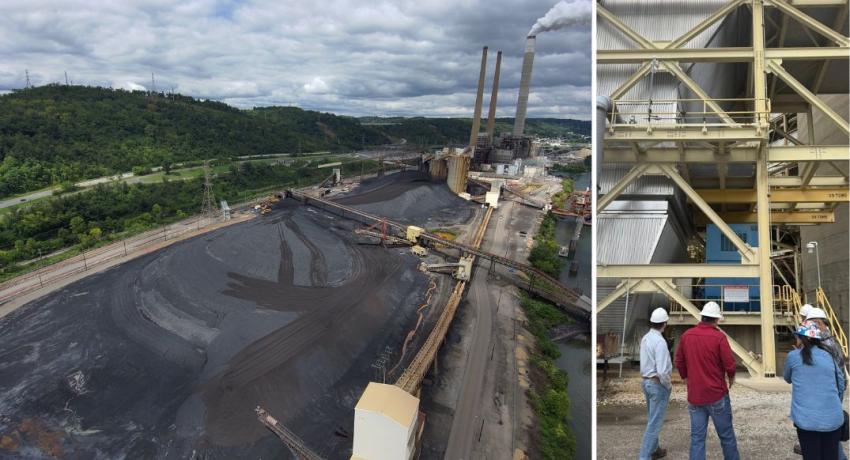COLUMBUS, Ohio—The President and CEO of Ohio’s Electric Cooperatives, Craig Grooms, was in Washington D.C. Monday to support agency announcements that aim to bolster more coal production in the U.S., and to keep coal plants from retiring so the country can generate more reliable, affordable electricity at a time when demand is surging due to data center growth.
The announcement by U.S. Department of Interior Secretary Doug Burgum opens 13.1 million acres of federal land for coal leases. The Department of Energy plans to invest $625 million to upgrade coal plants and prevent early retirements brought on by years of strict, costly EPA regulations.
The restrictions were loosened by new USEPA Administrator Lee Zeldin, including a revision to the 2024 Effluent Limitation Guidelines (ELG) Rule, which Buckeye Power, Inc., has been anticipating. The revision gives coal plants another six years to decide if they are going to comply or not with the ELG Rule—extending it from the end of 2025 to the end of 2031. Coal plants that had planned to comply with the ELG Rule, now have until the end of 2034 to complete the work—or another five years. In addition, the rule's technology basis—Zero Liquid Discharge—will be reconsidered. This is a positive development for Ohio's electric cooperative-owned Cardinal Plant and the coal-fired power industry as a whole, although significant challenges are expected to be launched by non-governmental, environmental organizations.
Cardinal Plant is only one of three coal-fired plants still operating in Ohio today. In 2009, there were 21 coal plants in the state producing electricity. Many retired early due to the continued costly EPA regulations over the last 16 years.
The agency leaders said the announcements this week support President Trump’s goal of re-strengthening U.S. energy dominance by incentivizing more energy production, improving supply chains, and creating more energy jobs which could boost the economy and improve American security.
The plan also lowers royalty rates on coal and speeds up approvals for projects in states such as Montana, Wyoming, and Tennessee. Coal lease sales are moving forward in North Dakota and Alabama too. Officials say the changes are part of the administration’s “all-of-the-above” energy strategy to reduce dependence on foreign sources.
While Ohio’s coal comes primarily from private land, an increased supply of coal in the country could help to lower the cost of coal overall and bring down the cost to produce electricity. The EPA said its proposals would eventually save Americans $200 million annually in electricity costs.
Ohio’s Electric Cooperatives President and CEO, Craig Grooms, said, “Coal has long been the primary source of the reliable, affordable electricity we provide to Ohio’s 24 electric cooperatives and their members, and Ohio’s electric cooperatives applaud the administration’s plans.” OEC also supports and invests in an all-of-the-above approach to energy production, which includes coal, natural gas, hydropower, wind, solar, and biomass.
“Coal has a long future, and it’s critical to our country,” said Chris Wright, U.S. Dept of Energy Secretary Chris Wright. “Coal is by far and away the world’s largest source of electricity, and we are going to stop closing coal plants which drives up electricity prices.”






